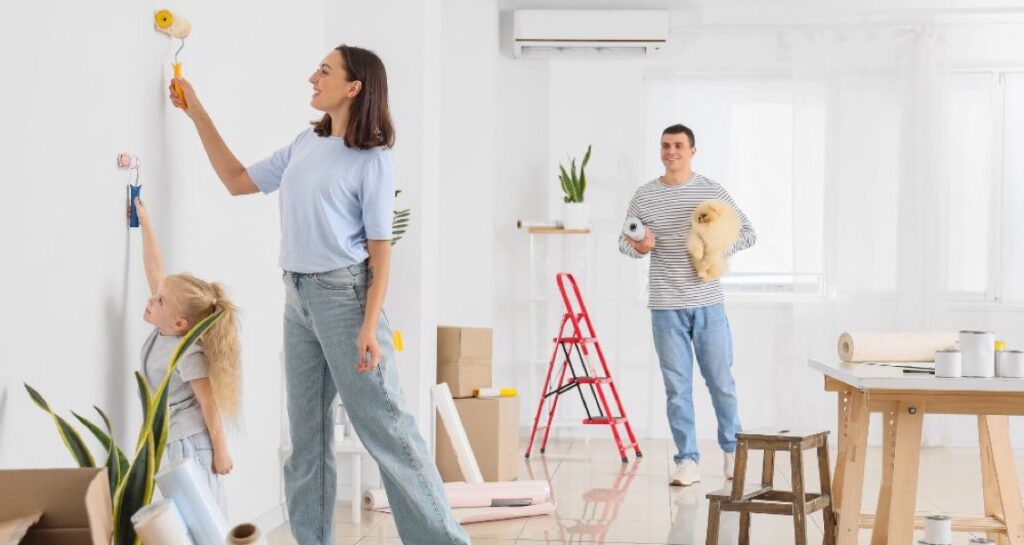Painting your home’s interior is an exciting project, but it can also pose potential risks to your pets. Pets are naturally curious and might get too close to the painting process, leading to health issues or accidents. These tips for keeping your pet safe while interior painting will help you protect your furry friends while creating the home interior of your dreams.
Choose Pet-Friendly Paint
An important step in keeping your pet safe is choosing non-toxic and pet-friendly paint. Many traditional paints contain volatile organic compounds (VOCs), which can release harmful fumes into the air. These fumes may cause respiratory problems, especially for small or sensitive pets.
Look for paints labeled as low-VOC or VOC-free to reduce the risk of harmful exposure. Additionally, water-based paints are typically safer than oil-based options and are easier to clean up if any spills occur.
Keep Pets Out of the Painting Area
While painting, keep your pets away from the workspace. Cats and dogs will often try to investigate the new smells and materials, which can lead to accidents, such as ingesting paint or getting paint on their fur.
You should create a designated space in another room where your pets can stay while you work. Provide them with everything they need, such as food, water, toys, and a comfortable place to rest. If your pet feels anxious in new environments, consider using calming sprays or pheromone diffusers to help them relax.
Maintain Proper Ventilation
Good ventilation is key when painting indoors. Even with pet-friendly paints, fumes can build up, creating an unpleasant or unsafe environment for everyone in the vicinity.
A quick fix is to open windows and doors and use fans to help circulate fresh air throughout the house. Keeping the air moving will help reduce fumes and speed up the drying process. If possible, schedule your painting project during mild weather to maximize natural ventilation.
Clean Up Immediately After Painting
Cleaning up accidental paint spills right away to prevent your pet from ingesting or stepping in the paint. Additionally, once you finish painting, remove all tools, brushes, and open cans to prevent your pet from accessing them. Even dried paint can prove harmful if ingested, so take time to inspect the area for any missed spots.
If you’re considering hiring a professional painting company, discuss their pet safety measures and determine whether they use non-toxic paints. Of the factors to consider when hiring professional painters, these are the most important for families with pets.
Monitor Your Pet’s Behavior
After finishing a painting project, keep an eye on your pet’s behavior. Watch for signs of discomfort or illness, such as coughing, sneezing, or lethargy.
If you notice any unusual symptoms, contact your veterinarian right away. Taking immediate action regarding your pet’s health will help them recover from potential exposure to paint fumes or materials.
By following these tips for keeping your pet safe while interior painting, you can minimize risks and make the process more comfortable for your furry companions. Whether you choose to tackle the project yourself or hire professionals, taking extra precautions will keep your pets healthy and happy throughout the process.

